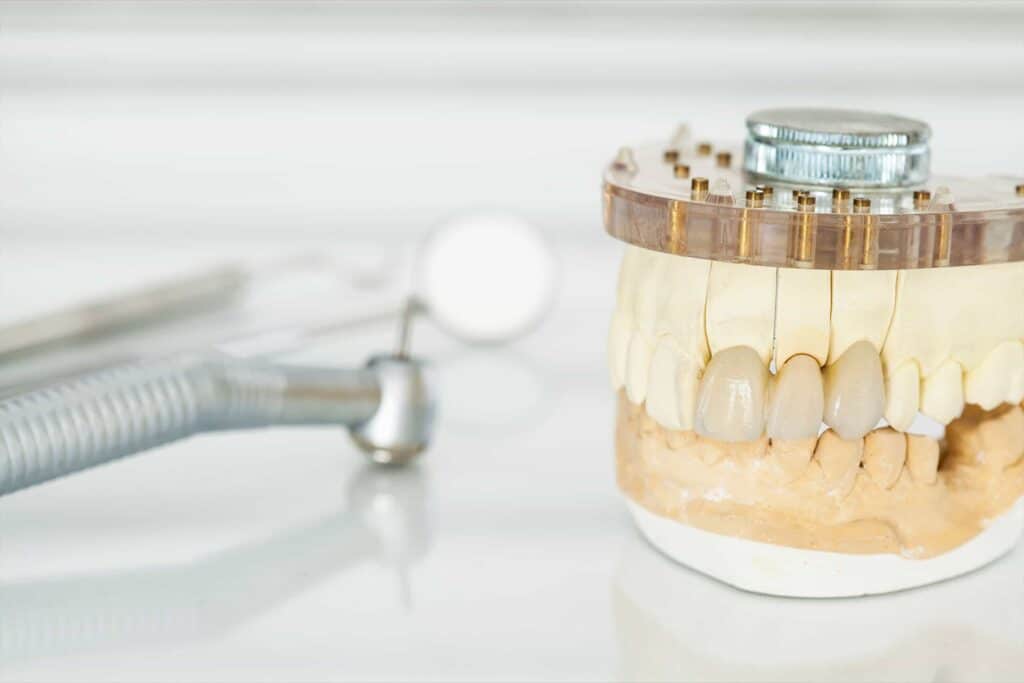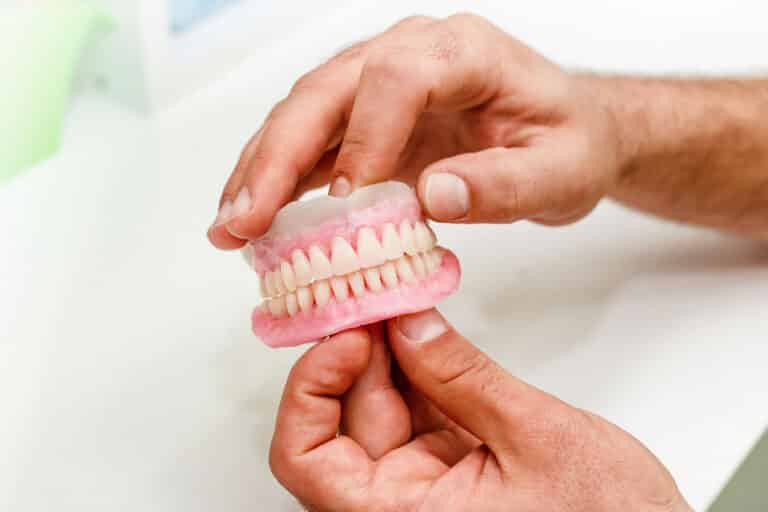Tooth bonding, also referred to as dental bonding, is when a white filling material called composite resin is bonded directly to the tooth. This dental procedure can repair a cracked, chipped, broken, or otherwise damaged tooth. Teeth bonding can also assist with other cosmetic dental problems affecting the teeth. These include gaps, misshapen teeth, discoloration, or adding length to a tooth shorter than the rest. Teeth bonding, in particular cosmetic dental procedures, are mostly done on front teeth.
Dental bonding should not be confused with veneers, as they’re technically not the same. Instead, teeth bonding is when composite resin replaces damaged or missing natural tooth structure or alters the shape of the natural teeth. Only part of the tooth is covered as opposed to veneers which completely cover the surface of the tooth.
Dental bonding can be considered the same in many regards as to composite fillings. Fillings repair chipped teeth, damage from tooth decay, and even use the same type of material.
When Should I Get Tooth Bonding?
Dental bonding works very well for minor tooth injuries on teeth that don’t have severe levels of tooth decay. If you’ve chipped or broken off part of your tooth, tooth bonding may work quite well. However, the optimal treatment option will depend on the strength of the remaining tooth structure. It also depends on the ratio of synthetic to natural teeth, amongst other factors.
If large portions of the tooth are broken or damaged, you may need a crown or even a dental implant. Generally, if more than half of the tooth is missing, tooth bonding may not be the best option. If you are looking for the best esthetic outcome, generally veneers and crowns are going to look better. They will stain less than a bonded tooth.
Dental bonding also works really well for those who want to change minor esthetic issues. These issues include oddly shaped teeth, small gaps, or even severely discolored teeth. However if dislocoled teeth is your only issue, you may want to first whiten your teeth. Then move onto dental bonding. Teeth bleaching can be incredibly effective. There are even cases of extremely discolored teeth from tetracycline staining which have been significantly improved over time.
A dental bonding procedure can fix chipped or broken teeth, depending on the severity of the break and cracks in the teeth. It can also resolve gaps and change the appearance of teeth that aren’t the same length. It is also a cost effective option as teeth bonding is less expensive. Overall, it’s a fantastic option for many people with minor tooth problems.
Does Tooth Bonding Hurt?
The actual procedure itself will not hurt. Depending on what is being done, you may not even need to be numbed. For instance if the goal is to slightly change the shape of the tooth or close a small gap, the tooth may not require much drilling, which may eliminate the need for anesthesia.
Though everyone has different levels of pain tolerance, most people don’t even require pain relievers after the procedure. While it’s not painful, it’s fairly common to have some tooth sensitivity afterward. Hot or cold foods and beverages may bother you for a short period of time. Your gums may also be sore from the treatment, but that should heal within a few days under optimal oral health conditions.
In the event that you do suffer from a bit of sensitivity after a tooth bonding procedure, you can always take over-the-counter medication to help. Tylenol and Ibuprofen will reduce inflammation and help with any discomfort. If you are experiencing pain or discomfort that cannot be managed with over the counter medication, something else is going on. You should contact your dentist as soon as possible.
What Happens During Tooth Bonding?
Your dental bonding procedure will usually take only one visit, and you can go home immediately. You may or may not need anesthesia, depending on the extent of the damage to the tooth. While there may be a few variations to the steps, this will be close to what your
Step One: Picking a Color
After getting you comfortable, the dentist will use a shade guide to choose a tooth colored resin material that matches the color of your natural tooth. They may have a few different types of bonding material which mimic the enamel or dentin.
Step Two: Modifying the Natural Teeth
The teeth are then prepped which involves removing any weakened or unsupported enamel. Then, cleaning out any dental decay, and roughening the enamel to improve bonding. Sometimes the enamel is beveled to better blend in the bonding material to the natural tooth.
Step Three: Cleaning and Preparing the Teeth
Once the teeth are adequately modified, they are cleaned using an etching gel. This removes the smear layer and improves the strength of the bonding material to the teeth. Then, if the tooth hasn’t already been isolated, it will be to prevent moisture contamination. Teeth bonding requires a dry field for proper bonding of the tooth colored material to the tooth itself.
Then various agents are used to chemically prepare the tooth for dental bonding, similar to how a surface is primed prior to painting. Then a composite resin is placed incrementally, shaped, then cured. This process is repeated per tooth until the rough shape of the front teeth is completed.
The dentist will then clean, shape and polish each bonded tooth according to dental principles that make it look like a repair had not even occurred.
How Long Does Dental Bonding Last?
While there are several factors that come into play, in general dental bonding can be expected to last approximately seven to ten years before needing repair. If you clench, grind, have a heavy bite, or have poor oral habits, these can lower the life expectancy of dental bonding. However it can be a long lasting solution for small chips or minor cosmetic issues. Remember that while it may be structurally sound, the margin (where the resin meets the tooth) will stain over time.
Are There Any Risks Involved With Tooth Bonding?
Tooth bonding is a safe outpatient dental procedure,and there are any very few adverse side effects. Most often they include soreness and sensitivity. One risk is that dental bonding tends to fracture more than porcelain. However it is much easier to fix than a fractured porcelain veneer or crown.
How Much Does Tooth Bonding Cost?
Dental bonding costs depend on how many teeth require a bond and your insurance coverage. Typically, it costs between $100 and $400 per tooth, but it can vary by practice.
Dental insurances often view tooth bonding as a restorative procedure so that they may cover some or all of it. If your provider has it listed as cosmetic, they may still offer some coverage.
Either way, try not to get discouraged. Many dental offices offer payment plans to make tooth bonding possible for all.
How Can I Take Care Of My Bonded Teeth?
Taking care of bonded teeth can quickly assimilate into your daily oral hygiene routine. Brush them well, and avoid biting your nails or hard food.
To prevent staining your bonded teeth, avoid wine, tea, or coffee for the first few days after the procedure. Overall, you have to care for your bonded teeth like your actual ones. Please don’t use them to open food packages and commit to a healthy oral care practice.
Tooth bonding is a simple process with little to no down time, and it’s the perfect solution for many tooth imperfections!





